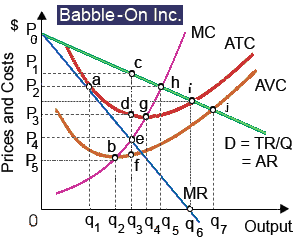After Babble-On’s patents lapsed and entry and exit turned into possible in this illustrated figure of market, in the long run Babble-On would be expected to: (i) continue to reap economic profits. (ii) break even and experience zero economic profit. (iii) have zero accounting profit. (iv) operate at inefficiently low levels of output. (v) raise the price of its software.

Can someone explain/help me with best solution about problem of Economics...